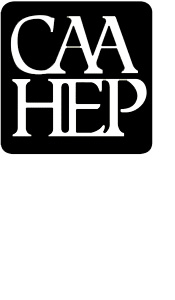
Our Medical Assisting programs prepare you to work in a clinical and/or administrative setting in various health care areas, such as physicians’ offices, managed care organizations, outpatient care and certain functions within a hospital.
Our department is proud to offer an associate degree and three credit certificates in the following areas:
Administrative Medical Assistant (lor)
Electrocardiogram and Intravenous Therapy Technician (credit certificate and lor)
Medical Assisting (degree and certificate)
Heidi McLean Frye
410-777-2627
[email protected]
HLSB 368F
Stephanie Smith-Baker, M.Ed., CAHI, CPhT,
Assistant professor, Medical Assisting
Program coordinator, Medical Coding
410-777-7497
[email protected]
HLSB 364F

Anne Arundel Community College's Medical Assisting Certificate program is accredited by the Commission on Accreditation of Allied Health Education Programs upon the recommendation of the Medical Assisting Education Review Board (MAERB).
Commission on Accreditation of Allied Health Education Programs
9355 - 113th St. N, #7709
Seminole, FL 33775
727-210-2350
www.caahep.org
The following information applies to the CAAHEP-accredited medical assisting certificate only.
Our mission is to attract, nurture and prepare market-ready medical assistants through excellence in program curricula, high-quality instructors, meaningful didactic and laboratory learning, and clinical experiences that enhance student knowledge, meet market demands, enhance the health of the community and promote lifelong learning.
Our vision is to recruit, retain and graduate self-directed, self-determined and market-ready citizens of the world who are “change leaders” in their respective field of study.
Goal 1
“To prepare medical assistants who are competent in the cognitive (knowledge), psychomotor (skills) and affective (behavior) learning domains to enter the profession.” (CAAHEP.org, 2022)
Goal 2
To, at least annually, assess the appropriateness and effectiveness of program resources (e.g., Resource Matrix) related to faculty, clerical and resource staff, curriculum, finances, offices, classrooms, laboratory and ancillary facilities, clinical affiliates, equipment, supplies, computer resources, instructor reference materials, and faculty/staff continuing education.
Goal 3
To ensure a curriculum where students progress through the program in a logical sequence of classroom, laboratory and clinical instruction to achieve program goals.
Goal 4
To create shared interdisciplinary learning experiences for students with an emphasis on ethical, moral and diversity issues.
Goal 5
To emphasize a holistic approach in the management of client/patient care.
Goal 6
To form linkages with professional organizations that will accept students as members.
Goal 7
To provide experiences for students that create opportunities for communication among other health care providers, and the community.
Goal 8
To maintain a diverse advisory board by identifying within the community the internal and external stakeholders, including students, graduates, faculty, administration, employers, physicians and public members.
Goal 9
Maintain Clinical and Administrative Quality Review committees to conduct, at least biannually, analysis of program quality, program resources, courses, curriculum and outcomes measures.
Goal 10
To establish, maintain and nurture relationships with clinical sites and preceptors that provide for a variety of quality experiential learning opportunities, and entry-level employment opportunities.
Goal 11
To identify current industry and community needs both in academic, clinical practice and cultural contexts.
Goal 12
Ensure the content and competencies included in the program’s curriculum meet or exceed those states in the CAAHEP Curriculum Standards and Guidelines.
Goal 13
Provide students with an unpaid, supervised practicum of 160 hours in an ambulatory health care setting.
Goal 14
Ensure students have mastered and demonstrated the knowledge, skills and behaviors of the CAAHEP MAERB Core Curriculum in performing clinical and administrative competencies prior to graduation.
Goal 15
Ensure that the practicum experience and instruction of students is meaningful and parallel in contents and concepts with the material presented in lecture and laboratory sessions.
Goal 16
Ensure practicum sites and affiliates provide a variety of student experiences.
Goal 17
The practicum will conduct, at minimum, one on-site visit during the student’s assigned 160-hour practicum time, but will maintain communication with the student (weekly) and preceptor (as needed) throughout the practicum.
Goal 18
Prepare students for national certification and/or credentials.
Goal 19
Conduct ongoing evaluation and assessment to ensure equity, diversity and inclusion (EDI) is in all courses and the program.
The Anne Arundel Community College Medical Assisting certificate program annually publishes and makes accessible to prospective and current students, graduates and the public the Annual Review Report (ARF). Below are the 2023 Medical Assisting Education Review Board approved results:
Advanced Placement
The granting of credit for general education requirements for students is determined upon the receipt and review of formal transcripts by the records and registration office. This includes high school AP courses and CLEP examinations. The granting of Advanced Placement does not apply to the following courses: MDA-111, MDA-115, MDA-117, MDA-140, MDA-142, MDA-274, MDA-275 and HIT-200.
Transfer Credit
Students who are transferring to AACC and submitting formal transcripts from another accredited institution may receive credit for MDA-113 Medical Terminology (3 credits) and ACA-100 Student Success (1 credit) courses that meet the course descriptions and credit hours required by the AACC medical assisting program. Granting of credit for MDA-113 and ACA-100 is determined by review of formal transcripts by the records and registration office, and if needed, upon consultation from the Medical Assisting department chair. Therefore, the total number of credits that the certificate program will accept as transfer is 4.
Transfer credit for MDA-111, MDA-115, MDA-117, MDA-140, MDA-142, MDA-274, MDA-275 and HIT-200 is not granted due to accreditation requirements and specificity of the Medical Assisting certificate program courses in measuring student achievement of the cognitive, psychomotor and affective competencies.
Students in the Anne Arundel Community College continuing education Clinical Medical Assisting program that successfully complete the CMA-300, CMA-301, CMA-302 and CMA-303 clinical courses, including all clinical psychomotor and affective competencies, and provide proof of a current and active National Healthcare Association Medical Assistant Certification (CCMA) can apply and receive credit for the MDA-140 Clinical Medical Assisting 1 and MDA-142 Clinical Medical Assisting 2 courses.
Experiential Learning
Credit is not given for experiential learning due to programmatic requirements to fully assess the student knowledge and achievement of the required cognitive, psychomotor and affective competencies.
Medical assisting is a profession with many rewards. Practitioners can perform both administrative and clinical services, filling several roles in a variety of health care environments. The Bureau of Labor Statistics clearly outlines that it is a growth field, with an anticipated 18% growth from 2020 to 2030.
Medical assistants work directly with providers and patients, with the goal of providing health care and ensuring patient safety. It is a position with a great deal of responsibility.
As with any health care position, there are certain occupational risks that come into play with being a medical assistant. Those hazards include:
At the same time, there are protections set up with the Occupational Safety and Health Act (OSHA), and those protections are particularly important within a health care environment. OSHA has a series of standards that protect the safety of health care workers and patients.
Accredited medical assisting programs are required to teach students about the hazards that they face on the job and the protocols that can be put into place to ensure a workplace culture that prioritizes safety.